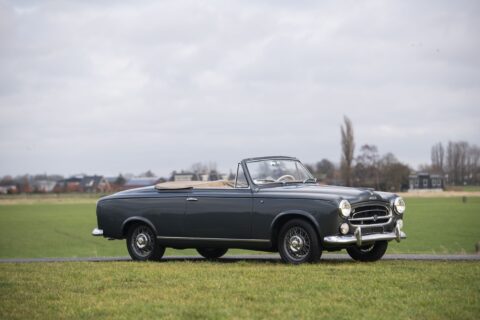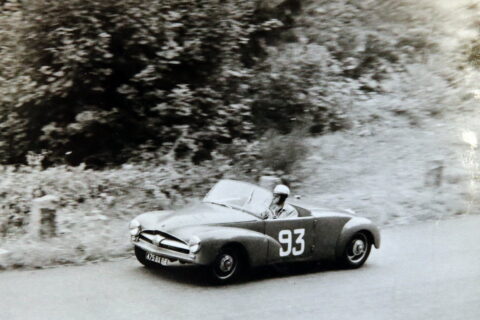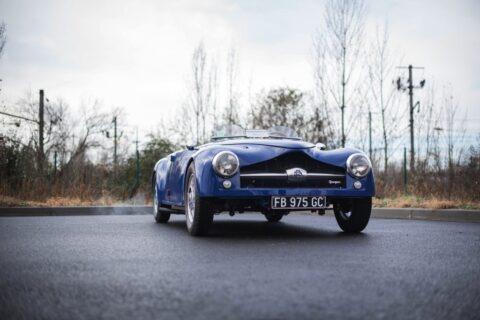1985 was the year of Peugeot’s great preparation for future rally success. A year in which – after a first participation in the World Rally Championship in 1984 – the finishing touches had to be done on man and machine. After all, Peugeot had only entered the rally adventure with a completely new, and thus still young, 205 Turbo 16 the year before. But 1985 brought even more prosperity than hoped for!
In 1984, too, success had come earlier than expected. From the first special test at the Tour de Corse it was known that the Peugeot Talbot Sport team could win with this 205. The concept of a four-wheel drive car with a centrally placed engine, which was also equipped with a turbocharger, was without a doubt the right technical choice.
The first victory
The remainder of the first rally season had only confirmed that this first result set the tone for a rally career, in which the Peugeot 205 Turbo 16 would end in the top of the standings in almost all rallies. After the first victory with Vatanen-Harryman in the 1,000 Lakes Rally in Finland, the trick was repeated in the two subsequent stages of the world championship: the Rally of San Remo and the RAC rally.
The 1985 program
Peugeot Talbot Sport was thus completely ready in 1985 to compete in the world rally championship (WRC). Since the preparations started in 1982, the main goal had been to win the world championship among the brands, and so they took part in all the rallies planned on the 1985 calendar.
In the majority of the 1985 rallies, two 205’s Turbo 16 were used. A third car was used in a number of rallies to strengthen the team or to secure the manufacturer’s title. The third car was also used to have short or medium-term technical developments tested by one of the drivers in the field. The car could also provide assistance within the applicable rules – if necessary.
The drivers
The Peugeot Talbot Sport team in 1985 consisted of three teams, all three of which had an exclusive annual contract. The first driver was the French Bruno Saby. He had been French rally champion in 1981 and teamed up with navigator Jean-François Fauchille. There was also the team of Finns Timo Salonen and Seppo Harjanne. Finally, there were Ari Vatanen, the winner of the three rallies in 1984 that underpinned the success of the 205 Turbo 16, and his partner Terry Harryman.
The organisation
Peugeot Talbot Sport’s joint operations were located in Boulogne. In total, about a hundred people were involved in the rally project. The entire division was led by Jean Todt. 65 team members were actively involved with the technology of the rally cars. Finally, twenty people were employed in the promotional field. This department was headed by Jean-Pierre Nicolas.
Evolution model
On April 1, 1985, one year after the homologation of the 205 Turbo 16, the second evolution model was presented. There were three main motives for the engineering department to develop this evolution version. In the first place: weight reduction. They wanted to get as close as possible to the regulatory minimum weight of 890 kilograms. In addition, the aim was to increase the engine power to approximately 450 hp, without reducing the smoothness of the engine.
Finally, they wanted to integrate the knowledge acquired from the 1984 season into the concept of the car and try to further improve the accessibility of the car’s mechanical components and the quality of the braking system.
The races
Expectations were therefore high for the 1985 season. The 205 Turbo 16, however, exceeded the wildest dreams. After brilliant victories in Monte Carlo, Sweden, Portugal and a double victory in New Zealand, the victory in the 1,000 Lakes Rally took the world championship in the brands. Timo Salonen also won the drivers title.
The civil version
Derived from the rally gun, a “civil” 205 Turbo 16 was launched, a two-person sports car produced in a production run of 200 units to enable the homologation of the rally version for Group B. The Turbo 16 also had four-wheel drive. The engine, which had a power of 200 hp, was placed transversely centrally, in front of the rear wheels.
The collector’s value of this model is very high nowadays; much higher than that of an average used Peugeot. Prices for the 205 T16 are between 45,000 and 50,000 euros!





